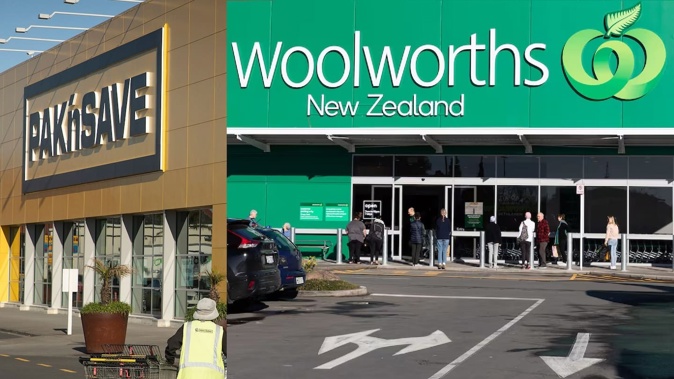
By Susan Edmunds of RNZ
Consumer NZ says supermarkets are still making pricing errors, despite increasing pressure and scrutiny on them.
Charges have been filed and a number of supermarkets have pleaded guilty to breaching the Fair Trading Act with inaccurate pricing and misleading specials.
But Consumer NZ says misleading specials are still costing shoppers tens of millions of dollars a year and has launched a petition calling for tougher penalties for breaches of the act.
It provided examples of a number of ways that people could be caught out by misleading signage in supermarkets.
A dodgy multibuy refers to a situation where the individual price and the multibuy price don’t add up to a saving.
 A mince special where a tray of meat was $4 or people could buy three for $20. Photo / RNZ
A mince special where a tray of meat was $4 or people could buy three for $20. Photo / RNZ
Consumer NZ pointed to a mince special where a tray of meat was $4 or people could buy three for $20.
In another case, packaging seemed to be making a confusing difference.
Two individual bags of Gingernuts were selling for $5 but the club price for a 500g twin-pack was $5.59.
 The Gingernuts that were selling for $5 but the club price for a twin-pack was $5.59. Photo / RNZ
The Gingernuts that were selling for $5 but the club price for a twin-pack was $5.59. Photo / RNZ
Sometimes the price on the shelf tag does not match what you pay at checkout.
In this case, supplied by Consumer, the price tag on the shelf said $27, but the customer paid more than $35 at the checkout.
 A box of Coca Cola a customer paid more at checkout for than the shelf price tag. Photo / RNZ
A box of Coca Cola a customer paid more at checkout for than the shelf price tag. Photo / RNZ
Sometimes it’s just hard to work out what the price is.
Consumer provided an example of double cream brie “reduced” to $10.60 for a quick sale – or was it on sale for $9.80?
Sometimes it seems as though there are multiple labels for the same item.
 Double cream brie with two prices. Photo / RNZ
Double cream brie with two prices. Photo / RNZ
In this case, two signs had two different prices for a single avocado.
“One said $1.69. The other said $1.99,” Consumer NZ spokesperson Abby Damen said.
 A sign saying a single avocado is $1.99. Photo / RNZ
A sign saying a single avocado is $1.99. Photo / RNZ
“The customer was charged $1.99. She returned two days later to ask what could be done about the pricing error.
“She was offered a refund of the price difference but after pointing out the supermarket’s new refund policy, she was refunded $2 and also kept her avocado.”
Chief executive at Consumer Jon Duffy said anyone charged more than the shelf price was entitled by law to a refund of the difference.
He said both supermarket chains promised a full refund in that scenario, but consumers sometimes had to know what was available.
A Foodstuffs spokesperson said with more than 14,000 products in a typical supermarket, and prices changing frequently due to supplier costs, promotions or new product lines, pricing was a complex job.
“But for our customers, it’s simple. They rightly expect the price on the shelf to match what they pay at the checkout,” he said.
“We take pricing accuracy as seriously as health and safety, aiming for zero errors.
“Across our local, family-owned stores, we manage tens of thousands of price labels and process millions of transactions every week, and we’ve invested in better systems, daily checks and electronic shelf labels to help get it right.
“If we do get it wrong, our policy is that the customer gets a refund and keeps the product. We’ve also strengthened staff training and store processes to make sure pricing is clear and accurate.”
Woolworths said it had more 3.5 million transactions in stores weekly “and sometimes errors do occur”.
“When they do, we try to make things right, through our long-standing and market-leading refund policy. Under that policy, if a customer is charged more than the advertised price for a product, they get a full refund and can keep the product.”
Duffy said Consumer had received 20 complaints about supermarket pricing since Tuesday. A normal rate would be two a day, he said.
-RNZ
Take your Radio, Podcasts and Music with you









